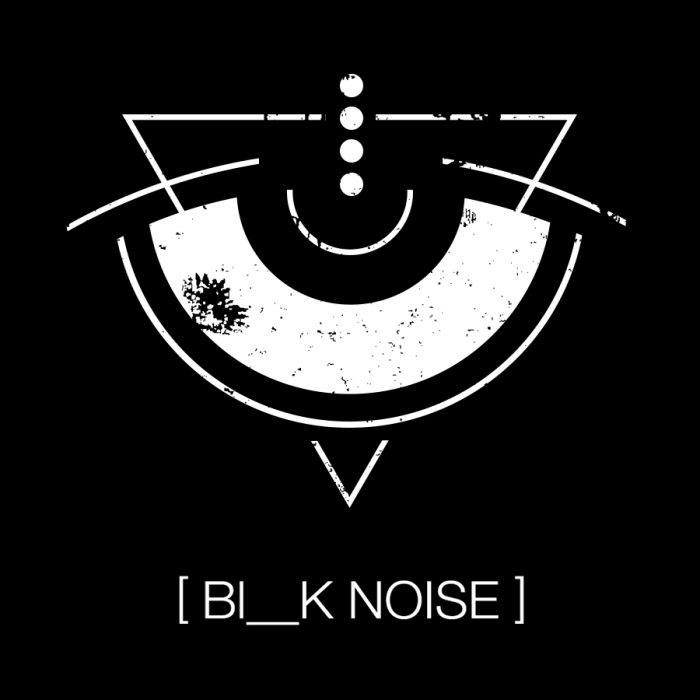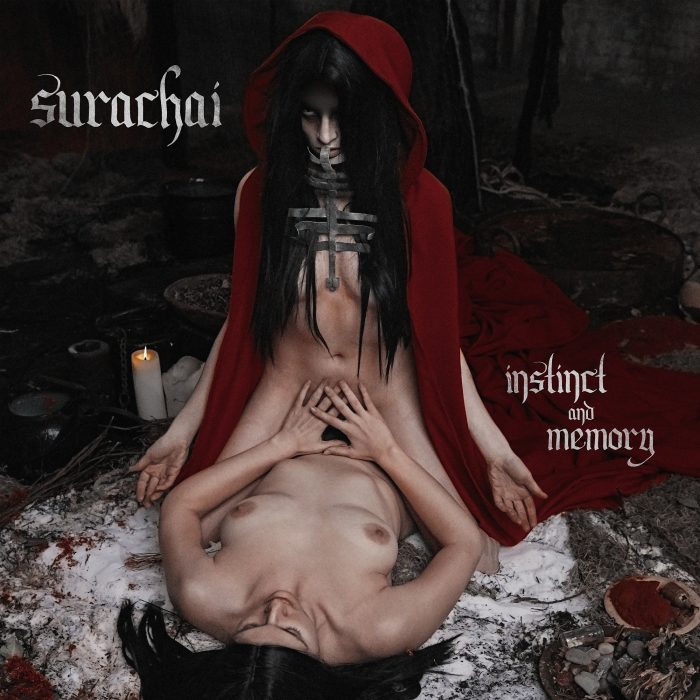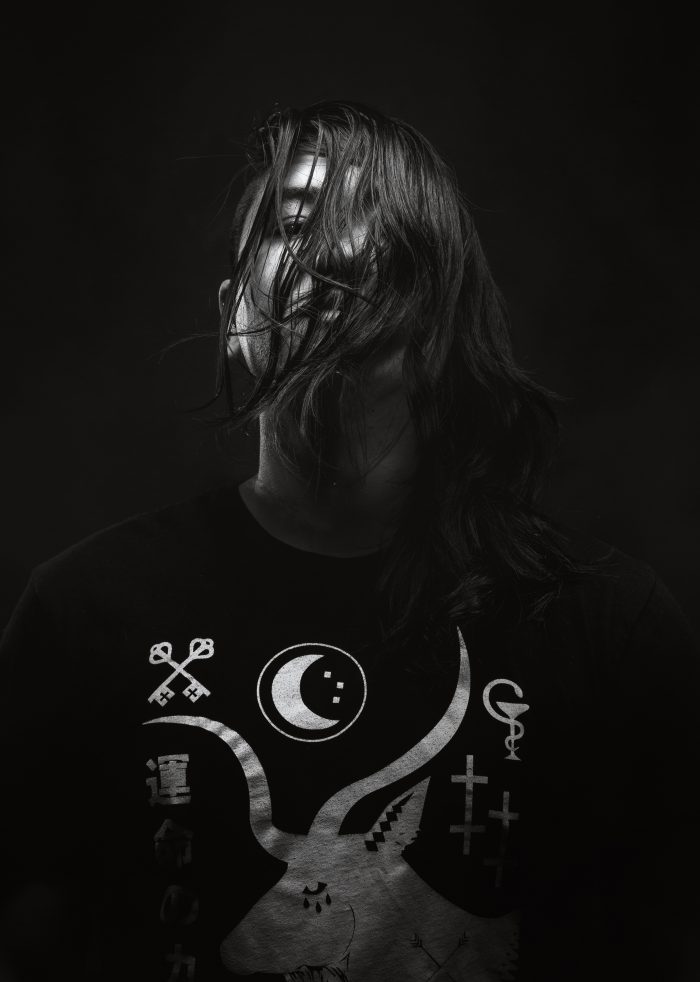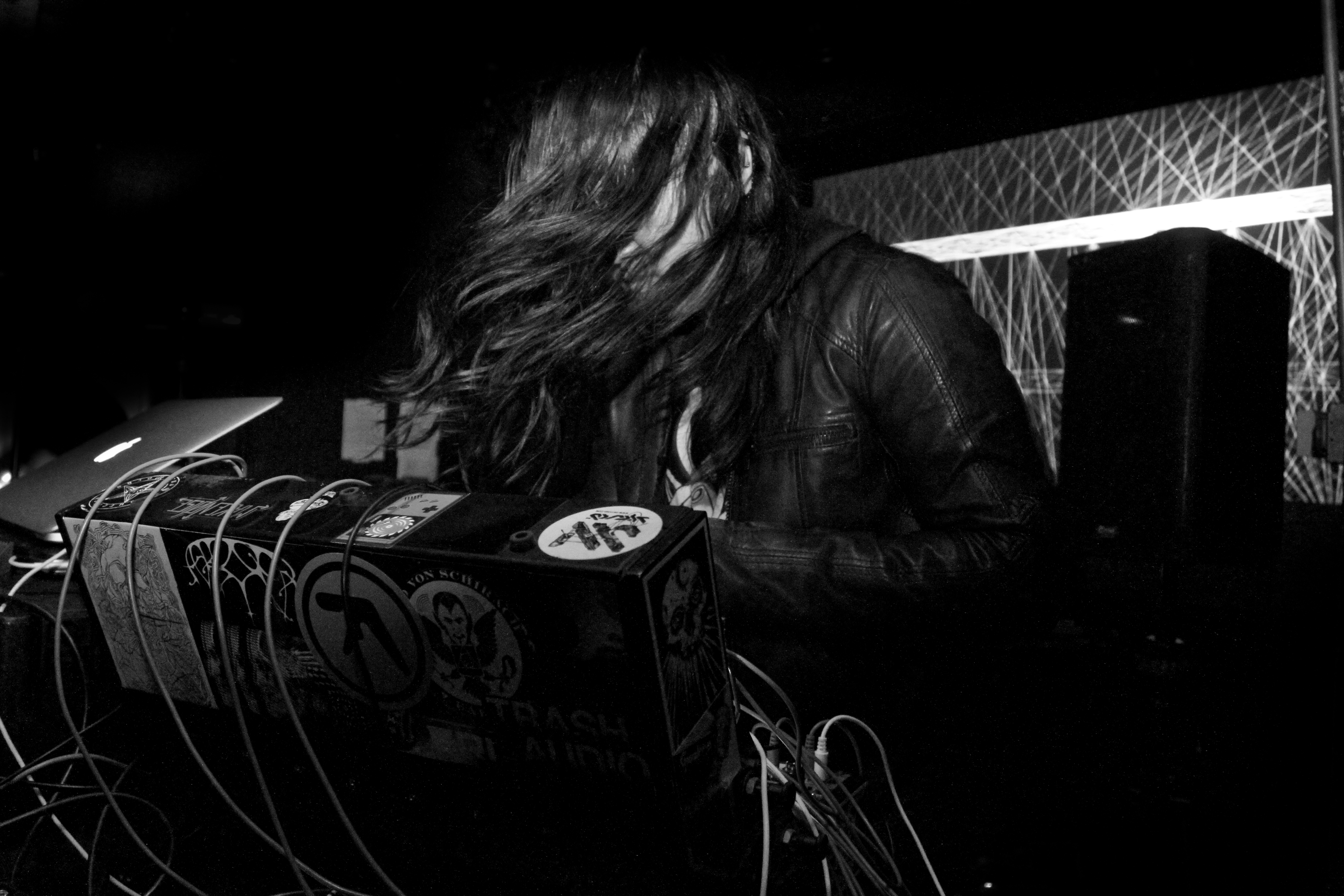Surachai is one of the most interesting and prolific producers in extreme/experimental music. Through the years he has released albums taking on different forms, ranging from black metal to dark ambient, and his latest release, Instinct and Memory, unveils the further evolution of his sound. In this interview we discuss his music, the Trash Audio collective and the BL_K label, favourite gear, collaborations and guest appearances.
Hello! First of all, thanks for finding the time to do this interview! It is much appreciated. So, can you give us a brief introduction to Surachai? When did the project first start?
Before Surachai, I released music under different aliases for different types of music, and I just wanted to simplify – decided to release things under my own name, despite whatever style of music it is. I had to go look back and see what the first release as Surachai was, it was 2008 and called Form – a modular synthesizer album, and later that year I released Programmed Cell Death which was industrial/drone metal. So right from the start I was confusing people.
So, what is exactly the deal with TRASH AUDIO? How does it work and what members does it include? I heard that it is a type of modular collective?
Good question! Though its not officially defined, what I’ve been telling people is that we’re an audio collective that has a platform to share our work and interests. I think we’re one of the few sites that have people all working in the audio field. Alessandro Cortini is an electronic musician and composer, Justin McGrath is a tour tech and sound designer, Moe Espinosa is an electronic musician and DJ, Richard Devine is a sound designer, composer and electronic musicians, and I am a location sound and sound designer. We’ve thrown events for the past 10 or so years that had a focus on synthesizers – it’s manufacturers, artists, and general audience wanting to learn more about it. It’s died down a bit because we’ve all become increasingly busy.

As far as I know, you also released the newest album through your own label, BL_K Noise. Do you feel there is a certain advantage take the DIY route? Are there also any upcoming releases from the label we should keep an eye for?
The only release I didn’t do myself was for To No Avail on the now defunct Handshake, Inc. company, and honestly, I had a great experience with them – but there is something to be said about doing things yourself. Moe Espinosa and I, of BL_K Noise, are strongly for the DIY route. Every single step of releasing the music, from recording to vinyl art layout, has been under our eye and I think it comes down to having control issues – and we both have them. We’re working on a collaborative EP and Moe / Hypoxia is releasing another EP.
I want to go a bit further back, and the release of Embraced, an absolutely brilliant release. Can you talk us through your thought process in going for an extreme black metal release? Since even though it contained a lot of noise and electronic elements, the dominant characteristic was black metal. You have described the recording process extensively here. Do you think that you might dwell in similar realms at any time in the future, or is that chapter finished?
Sure! I haven’t listened to that album in a bit, but that it’s something I can say I’m proud of, mostly because it involves other people. I think the link of the process explains everything. I listen to metal 80% of the time and am current with everything coming out, so I think revisiting metal is entirely possible if not inevitable. I will share a story of how I found all the personnel in it, however. Originally, I was talking to Sanford [Parker, sound engineer, worked with Indian, EyeHateGod, Minsk and more] about doing an interview for TRASH_AUDIO, and he invited me to the Nachtmystium recording sessions that introduced me to Charlie Fell (Ex-Lord Mantis, current Cobalt, Abigail Williams) and I asked him if he knew any local metal drummers that did things a bit differently, which led me to Charlie Werber (Guzzlemug) who I somehow persuaded to be on a couple albums. I ended up using all three musicians from Guzzlemug, Shane Prendiville on guitars and Tom Kelly on double bass. Drew (Ex-Nachtmystium, current Lord Mantis, Avichi) came over one night and laid down some tenor guitars. I tracked the rest of the guitars, bass and vocals myself. I got some files from Alessandro Cortini and Richard Devine since I bug them on a daily basis.
Do you feel there is an inherent connection between black metal and dark ambient? Do you feel that, even though your instrumentation or song structures of your latter albums differ from Embraced, they still carry an amount of black metal in there?
The connection I feel between black metal and ambient is more about peaks and valleys – and how black metal, or metal in general, takes up the entire frequency spectrum and ambient passages gives you time to breath on certain tones and timbres. So to me, it’s about pacing and how if everything is “on” the entire time, it loses impact. My recent synth-based albums generally employ the same amount of distortion and aggressive tones as my metal releases, it’s just that it’s an oscillator waveform going through it, not a guitar. So, tonally, it’s similar, but there are no vocals or blast beats to speak of.

I am sure you will soon post about the production of Instinct and Memory in the Bl_k Noise website, but do you think you can give us a short insight on the production cycle of the album?
Yes, there will be an Instinct and Memory article on TRASH_AUDIO very soon. But in short, everything was tracked on the modular into Protools where it was sequenced, arranged, and processed.
You also have a contributor in this album, Annie Hall. I must apologize, but I am not familiar with the name. Can you give some information on her background and the manner in which she contributed on the new album?
No worries! Annie Hall is a friend who wanted me to remix one of her tracks and I personally don’t love doing remixes, so I asked her if she’d collaborate on something. She’s an electronic musician based out of Windsor, ON, Canada. In the end, the process was very much similar to a remix, although you’ll never hear the original. She sent me samples which I ran through the modular or annihilated with DSP, arranged and sequenced to what it is now. There was minimal back and forth as she trusted me to get it where it needed to go.
You move between different genres with great ease. From electronica to noise and from industrial to dark ambient. Is this a subconscious effect? Something that just occurs naturally for you? Or is it a more meticulous process? A strict, structured methodology that needs to be followed in order to reach the end goal?
Just like most people, I listen to a lot of different music and never felt the need to be constricted to a certain type. So yes, I suppose it’s subconscious, as I’m not actively trying to throw people off – and let me tell you, people generally don’t like it and it’s not a good move if you’re trying to develop a following. People are hoping my next album is like my last one, which it never is. Though I’d like to thank the people that have hung in there and are open to change and exploration.

As a technical (sort of) question, can you give us some insight on your setup? What DAW are you using for composing, mixing and mastering? Are there any synths that you just cannot do without? Do you keep the process just “in-the-box” or do you extend to the analog domain as well?
Sure! My Instagram shows a lot of my synth/modular gear, but I’m using Protools for work (sound designer/location audio during the day) and for play I use Logic, Ableton and also Protools. For mixing (for this album), I tried to get everything right, or close to it, in the modular then record it into the DAW. For work, I use everything that Universal Audio, Izotope, Sound Toys, INA GRM, Soundhack, Valhalla DSP, etc. has. Mastering I don’t really like to do on my own material – for that I have Shawn Hatfield of Audible Oddities, who I’ve used on all my albums.
An essential piece of gear I have is the Thermionic Culture Vulture Super 15, it’s at the end of my signal chain, so everything goes into that thing. In short, it’s a mastering rack unit for idiots like me who like distortion and compression. There are essential modules I couldn’t remove from my setup because they’ve become part of my immediate sound. The L-1 Microcompressor was used on every single sound on the album, the overlooked Doepfer A101-3 12 stage vactrol phaser is pure brutality, WMD Geiger counter which they also make as a pedal, Harvestman Malgorithm ][ and Piston Honda MKII are both incredible distortions, Tip Top Audio drum modules as well as the Noise Engineering Loquelic Iteritas.
When you are mixing/mastering someone else’s music, do you find that your approach differs from working on your won stuff?
My day job is doing location sound, sound design and general mixing for advertising, so I’m able to detach my personal feelings from audio very easily and able to work towards the receiving audience. So, yes – completely different approach between different projects. I make moves in my own music I wouldn’t dare try on other peoples’ stuff, I generally try to work within their vocabulary and aesthetic.
Apart from the music, I would like to dive in the philosophy of the new record, so what can you tell us about its underlying themes? What are the concepts that you are dealing with in Instinct and Memory?
There is a really boring answer to this question, but I’d like to keep it vague for the sake of letting peoples’ imagination run with the art/titles.

You present some quite graphic imagery with your song titles (“Teeth and Rivers,” “Wolves and Stars).” Since your music is instrumental, do you feel that song titles need to provide adequate information, to allow the listener to get the right idea regarding your concepts?
The fact that its instrumental gives us so much control over how to shape the listener’s experience by selecting song titles and artwork that complement each other. I worked with the photographer (Emilie Elizabeth, who also did Ritual, and Briana Gonzales) to create a certain aesthetic I was reaching for with the running song titles. Obviously, they nailed it totally and I think we have supplied enough material in the artwork and song titles for listeners to glimpse into the world we created.
You have also appeared as a guest in Nachtmystium’s Silencing Machine, have collaborated with Henrik Nordvargr Bjorkk and have mixed albums (such as Cavernlight’s Corporeal). Are there any activities at this front? Any guest appearances or collaborations that we should be looking forward to?
There are people tapping me for different types of artistic pursuits and there are a bunch in the works, and of course I can’t talk about anything, because I generally take a background role to someone else’s project. You’ll definitely hear about some of them soon, especially on a site that is geared towards metal.
Also, how different is it for you when working as a guest or as part of a collaboration to working on your own music?
Great question. The answer is that it’s entirely different! As a guest, obviously you act like a guest – find your role, or simply ask for your role. This isn’t your show, so unless something really bothers you, know your place and do your work. A collaborative process is different because it’s basically a dialog between artists that results in a piece. Again, I like to assign vague roles to peoples’ strengths so no one overlaps in material. But really there’s no right answer, I just like things to be upfront and open.
Do you have plans for any future gigs?
I’m filming things for my live show at the beginning of May in Portland, and would love to be able to show off my entire audio/visual set in the coming year.





































































































New Comments